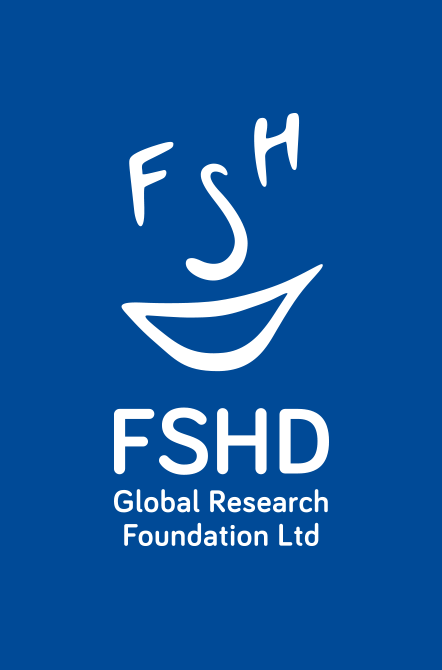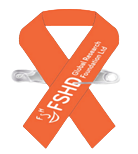GRANT 20
Research Institution: San Raffaele Scientific Institute, Italy
Principle Investigator: Dr Davide Gabellini
Type: Collaboration
Project title: “Identification of drugs for the normalization of aberrant FSHD candidate gene expression”
Status: Active
Summary
Project goal: to identify novel drugs that may be used to treat FSHD
The underlying genetic mechanism of FSHD has been known for 20 years. In spite of this there is no effective treatment available. One of the aspects of FSHD that complicates the development of treatments for the condition is the complexity of the issues the mutation causes. The mutation is responsible for the aberrant activity of as many as 18 different genes that code for proteins localized near the FSHD region (locus) on chromosome 4. Because of this FSHD could be caused by the cumulative effects of the combination of proteins being expressed. As a result, targeting the negative effect of just one of the proteins associated with FSHD would be unlikely to address all the symptoms of the condition. This makes the development of a therapeutic approach complicated.
A treatment allowing for a general normalization of the expression of all genes that are effected in FSHD may have a much better chance to ameliorate all the FSHD symptoms.
We have identified a non-protein-coding controlling element (called DBE-T) that behaves as a master regulator of the expression of the FSHD locus. Our results strongly suggest that by controlling the activity of DBE-T it is possible to normalize the aberrant expression of all the candidate genes in FSHD muscle cells.
Our goal is to obtain a drug to block DBE-T activity. To this aim, we are characterizing the fine details of the mechanism of action of DBE-T. In parallel, we are developing high capacity screen to identify molecules that can block the aberrant activity of DBE-T. The combination of these results will allow us to identify effective therapeutics that would prevent the aberrant protein production seen in people with FSHD.
PROGRESS REPORTS
October 2013
The goal of this research project is to identify drugs modulating the controlling mechanism in FSHD, one of the most common muscular dystrophies. Presently, there is no effective treatment or cure for FSHD. FSHD differs from the majority of inherited diseases by the fact that it is not caused by the classical mechanism of mutation in a gene producing a specific protein, resulting is loss of that protein.
In FSHD, there is a shortening of a repeated DNA sequence on chromosome 4, called D4Z4. D4Z4 is usually present in many copies in healthy subjects, while its copy number is reduced in most FSHD patients. Many studies have determined that D4Z4 controls the expression level of the genes coding for proteins localized near the FSHD region (locus) on chromosome 4. However, it is obvious that there are other factors, combining with the reduced number of D4Z4 copies to produce the symptoms of FSHD, since there are unaffected people with the same reduced number of D4Z4 copies. Nevertheless, reduction of D4Z4 copy number in FSHD patients causes the aberrant expression of several genes in this area on chromosome 4. Hence, it has been suggested that FSHD could be caused by the cumulative effects of several proteins from the FSHD locus being expressed at altered levels. For this reason, targeting the pathogenic effects of a single FSHD protein is unlikely to fix all the symptoms in FSHD. Dr Gabellini’s recent results have indicated that a non-protein-coding controlling element called DBE-T is a master regulator of the expression of the FSHD locus. He believes that by controlling the activity of DBE-T they should be able to control the aberrant expression of all the FSHD candidate genes. The current project plans to identify the molecular control mechanism of DBE-T action and to screen drugs that can block the aberrant activity of DBE-T and so normalize protein production by the FSHD locus. Results of their research should contribute to the development of effective therapeutics (drugs) for treatment of FSHD.
Update August 2014
The goal of this project is to characterize the interaction between the long noncoding RNA (lncRNA) DBE-T and its binding to ASH1L, in order to develop approaches to block the up regulation of FSHD candidate genes in the disease.
The project officially started on January 1st, 2014.
The first goal of the project is to determine the crystal structure of the complex between DBE-T and ASH1L. To this purpose, Dr Gabellini’s group are working toward identifying the smallest binding sites between the RNA (DBE-T) and the protein (ASH1L). For the RNA, a molecule that is quite large (10,000 bases), so far they have localised the DBE-T binding region required for ASH1L to a 120 base fragment. For ASH1L, a 2,964 amino acid (aa) protein, so far they have localised the binding region for DBE-T to a region of 26 aa.
Currently, they are testing even smaller fragments of DBE-T to further localise the RNA region required for ASH1L protein binding. In parallel, they are testing single amino acid changes in the ASH1L protein, to identify the individual amino acids involved in DBE-T binding. They are also working to reduce the RNA binding region to a smaller area, in order to allow formation of high quality crystals of the RNA/protein complex, for determination of the 3-dimensional (3-D) structure. Once the 3-D structure of the complex is solved, rational drug design can be used to identify potential blockers of the interaction.
Update May 2015
In FSHD patients, there is aberrant expression of many (17) different genes near the FSHD gene region (locus) on chromosome 4. It has been suggested that FSHD could result from cumulative effects of several proteins. If this is correct, targeting a single FSHD protein is unlikely to alleviate or cure FSHD. This group has recently identified a DNA controlling element called DBE-T that works as a switch for the production of FSHD proteins. They propose that by targeting DBE-T it should be possible to block all the FSHD genes. They are investigating ways to control DBE-T. In this regard, they have successfully managed to identify the active sites in DBE-T. These results are the starting point to identifying drugs that can block the aberrant activity of DBE-T, preventing the aberrant protein production by the FSHD locus. Hence, their work should contribute to the development of effective therapeutics (drugs) for the treatment of FSHD.
Update November 2015
Aberrant activity for as many as 18 different genes localized near the FSHD region on chromosome 4 has been reported in the disease. Based on this and other results, Davide Gabellini believes that FSHD could be caused by the cumulative pathogenic effects of several proteins produced by genes located on chromosome 4. Hence, targeting just one FSHD protein may not prevent all the symptoms of the disease, thus complicating the development of drugs for treatment of FSHD. Davide Gabellini’s group is working toward the development of a treatment that will allow for normal expression of all the genes in the FSHD associated region on chromosome 4.
They have identified a non-protein-producing controlling element (called DBE-T) that is a master regulator of gene expression from the FSHD region. Their results strongly suggest that by controlling the activity of DBE-T it is possible to normalize the aberrant expression of all the associated genes in FSHD muscle cells. Their ultimate goal is to develop a drug to block DBE-T activity.
To this aim, they are characterizing the mechanism of action of DBE-T. They are also developing a high throughput screening assay to identify drugs that can block the aberrant activity of DBE-T. The combination of these results should allow development of effective drugs to block aberrant protein production by the FSHD chromosome region for the treatment of FSHD.
Update July 2016
Despite the genetic problem responsible for FSHD is known since more than 20 years, no effective treatment or cure is currently available for the disease.
One of the aspects of FSHD that complicates the development of a cure is that aberrant activity for as many as 18 different genes encoding for proteins localized near the FSHD region (locus) on chromosome 4 has been reported in the disease. Thus, FSHD could be caused by the cumulative pathogenic effects of several proteins encoded by genes located on chromosome 4. As a result, targeting the pathogenic effect of just one FSHD protein would be unlikely to address all the symptoms in the disease complicating the development of therapeutic approaches.
A treatment allowing for a general normalization of the expression of all genes mapping on chromosome 4 and showing aberrant activity in FSHD would have much better chances to ameliorate all the FSHD symptoms.
We have identified a non-protein-coding controlling element (called DBE-T) that behaves as a master regulator of the expression of the FSHD locus. Our results strongly suggest that by controlling the activity of DBE-T it is possible to normalize the aberrant expression of all the candidate genes in FSHD muscle cells.
Our goal is to obtain a drug to block DBE-T activity. To this aim, we are characterizing the fine details of the mechanism of action of DBE-T. In parallel, we are developing high capacity screening to identify molecules that can block the aberrant activity of DBE-T. The combination of these results will allow us to identify effective therapeutics (drugs) preventing the aberrant protein production by the FSHD locus for the treatment of the disease.
Laboratory website: http://www.hsr.it/research/davide-gabellini/
Update August 2017
Facio-Scapulo-Humeral muscular Dystrophy (FSHD) is one of the most common diseases affecting the neuromuscular system. While FSHD affects manly muscle, the patients can also experience problems with their eyes, ears and brain.
Despite the genetic problem responsible for FSHD is known since more than 25 years, no effective treatment or cure is currently available for the disease.
One of the aspects of FSHD that complicates the development of a cure is that aberrant activity for as many as 18 different genes encoding for proteins localized near the FSHD region (locus) on chromosome 4 has been reported in the disease. Thus, FSHD could be caused by the cumulative pathogenic effects of several proteins encoded by genes located on chromosome 4. As a result, targeting the pathogenic effect of just one FSHD protein would be unlikely to address all the symptoms in the disease complicating the development of therapeutic approaches.
A treatment allowing for a general normalization of the expression of all genes mapping on chromosome 4 and showing aberrant activity in FSHD would have much better chances to ameliorate all the FSHD symptoms.
We have identified a non-protein-coding controlling element (called DBE-T) that behaves as a master regulator of the expression of the FSHD locus. Our results strongly suggest that by controlling the activity of DBE-T it is possible to normalize the aberrant expression of all the candidate genes in FSHD muscle cells.
Our goal is to obtain a drug to block DBE-T activity. To this aim, we are characterizing the fine details of the mechanism of action of DBE-T in order to develop molecules that can block the aberrant activity of DBE-T. This will allow us to identify effective therapeutics (drugs) preventing the aberrant protein production by the FSHD locus for the treatment of the disease.




